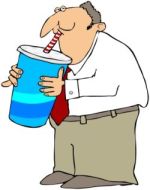Sources of Iron

I was recently asked by a family member to provide a list of food sources of iron. This is an important topic because iron seems to be one of the nutrients in which you are most likely to be deficient. If you have iron deficiency, you will feel weak, tired and even irritable due to a lack of oxygen in your tissues and organs.
Oxygen transport and DNA production
The iron in your body is found mainly in two proteins—hemoglobin and myoglobin. Both of these proteins have an iron component that helps to transport and release oxygen. It is for this reason that you need iron to feel well. Hemoglobin transports oxygen from the lungs to all parts of your body, while myoglobin is the oxygen-containing protein in your muscles.
Iron is also forms part of an enzyme needed for DNA synthesis, making it a necessary nutrient for a healthy immune function as well as growth and reproduction.
Your body can store some iron
There is a complex system for absorbing, storing and excreting iron in your body that helps to keep the balance of iron at its proper level. Just in case you need it, your body stores extra iron reserves in your spleen, bone marrow and liver.
Not all iron is created equal
There are actually two types of iron that you can get from your diet. One is “heme” iron that only comes from animal flesh foods. The other type of iron is called “non-heme” iron and is found in both animal and plant foods. It has been shown that the heme iron that you eat is more easily absorbed into your system. This is in part because animal flesh foods also contain a peptide that helps in the absorption of the non-heme form of iron.
Fun Fact about Sources of Iron: One of the sources of iron that you may not know is that using cast iron cookware will increase the iron content in your diet, since some of the iron from the pans will get into the cooked food.
Click here for information about Recommended Daily Allowances for Iron.
Helping iron get absorbed
There are some dietary factors that help iron absorption, such as the presence of the peptide in animal flesh foods mentioned above, and the presence of Vitamin C.
Conversely, other factors can inhibit iron absorption, such as certain vegetable proteins and the presence of substances found in beans and grains, as well as the tannic acid found in teas and coffee. Heme iron seems to be less affected by these dietary factors than the non-heme form.
Caveat: It is important for you to know that iron supplementation can affect the effectiveness of certain medications, and certain medications can have an effect on the absorption of iron. You should always consult with your doctor and pharmacist about the medications your are taking and their interactions with supplements.
Here is a list of iron-rich foods broken down into animal and plant foods.
Click here for a printable copy of this list.
Good sources of iron from animal foods (heme iron):
Liver
Chicken
Turkey
Beef
Clams and mollusks
Oysters
Salmon and tuna
Halibut, haddock, perch
Sardines
Veal
Eggs
Good sources of iron from plant foods (non-heme iron):
Broccoli
Potato (especially with skin)
Spinach
Green bell peppers
Parsley
Tomato juice
Breakfast cereals, breads, pasta, muffins, egg noodles, tortillas and other products enriched with iron
Wheat germ
Tofu
Beans, including pinto, kidney, lima and chickpeas
Lentils and split peas
Nuts, including walnuts, peanuts, pecans, pistachios, roasted cashews, almonds or sunflower seeds
Dried fruits, including apricots, seedless raisins, peaches, or prunes
Prune juice
Click here to go from Sources of Iron page to Anemia Definition page.

